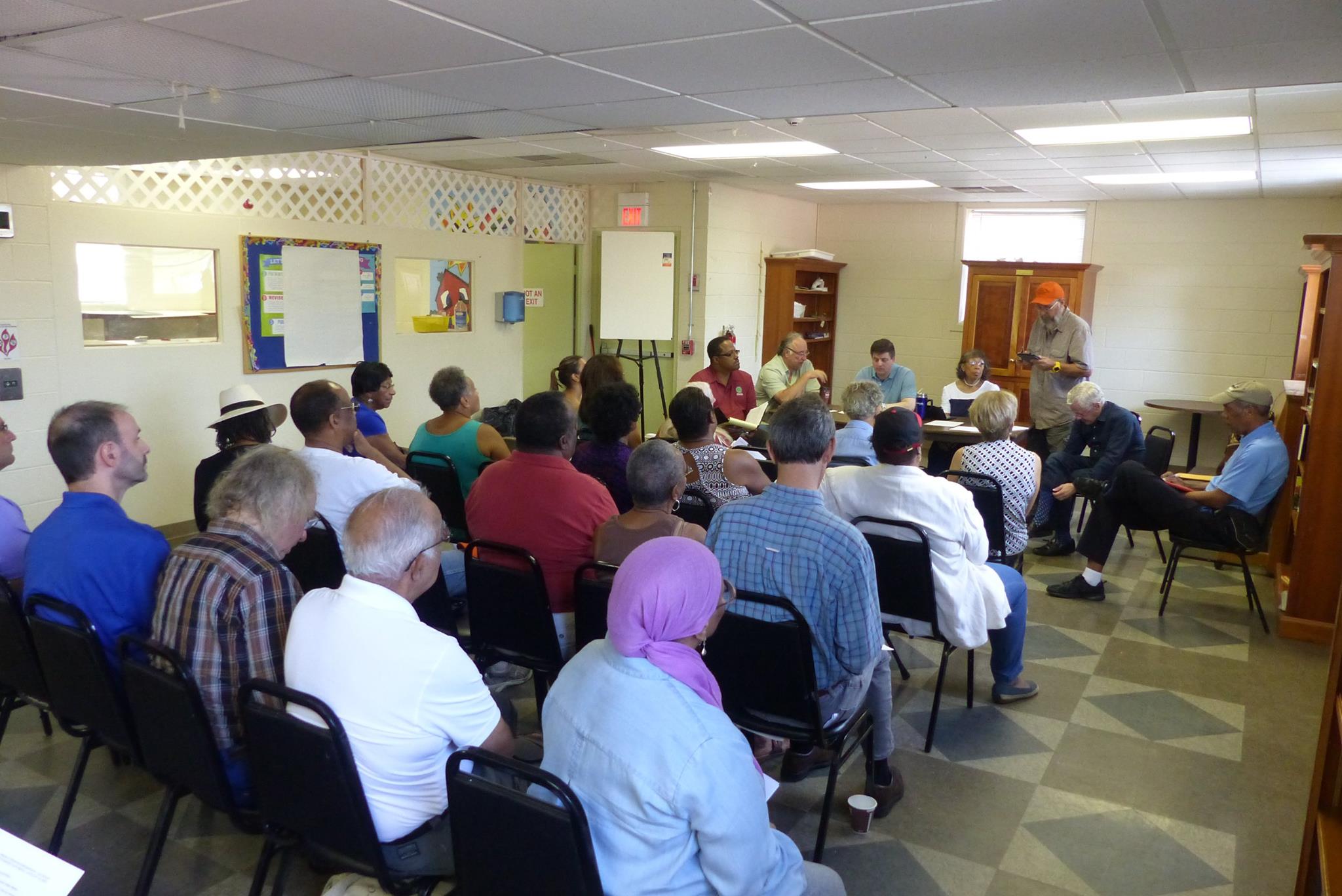 “There is something about black neighborhoods, or at least poor black neighborhoods, that make them seem irresistible to gentrification,” wrote Michael Henry Adams in the The End of Black Harlem published in the New York Times on May 27, 2016.
“There is something about black neighborhoods, or at least poor black neighborhoods, that make them seem irresistible to gentrification,” wrote Michael Henry Adams in the The End of Black Harlem published in the New York Times on May 27, 2016.
Leighton Newlin shared this article, comparing the desirability of Harlem to that of the Witherspoon-Jackson Community, with more than 50 attendees at a meeting on Saturday, August 13, part of the Joint Effort-Princeton Safe Streets activities, held at the Henry Pannell Learning Center, 2 Clay street.
Then John Bailey (far right. in the photo) moderated a panel that included, from left, Marc Deshield (Princeton’s administrator), developer Roman Barsky, architect Joshua Zinder, historian Shirley Satterfield, Newlin, and architect/developer Bob Hillier. The panel discussed the how best to take advantage of the neighborhood being designated a historic district.
Police Chief Nick Sutter, who stayed for the entire three-hour meeting, talked about police-community relations and took questions.
At a panel on affordable housing (photo below), prospective development of the Franklin Street housing area was discussed. 
Other items on the three-hour agenda were the plans for Mary Moss Park, and the need to be involved in the 2016 election. More photos on this Facebook page.
Residents have, in their words, been taxed out, moved out, deathed out, and rented out of their neighborhood. Get engaged, urged Bailey, a moderator who kept everyone on topic. A former basketball star , he makes his living now as a political consultant and returns annually to Princeton to ‘give back’ to a community he loves. “We are involved, but we are disengaged. You can’t assume that there is a conspiracy. We are not assertive enough.”
Thank you to Leighton Newlin, Shirley Satterfield, John Bailey and others for this airing of what is next, after historical designation, and to Barbara Fox for keeping those of us not present at the forum, informed and part of this conversation. Hopefully, the historical designation for Princeton’s Witherspoon-Jackson neighborhood will make a difference in helping to preserve and maintain its unique character–people and place. The Witherspoon-Jackson Historical and Cultural Society has been established under the leadership of Shirley Satterfield, historian of the Princeton African-American community, and among other purposes will “provide guidance and leadership on any and all issues related to historical designation in and for the Witherspoon-Jackson community.”